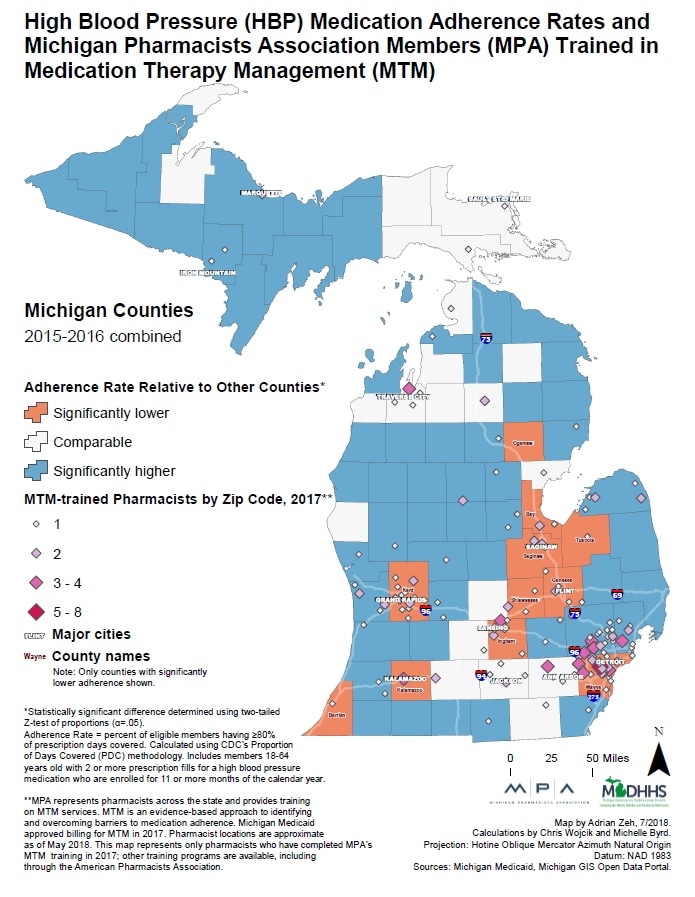Map Details – High Blood Pressure (HBP) Medication Adherence Rates and Michigan Pharmacists Association (MPA) Members Trained in Medication Therapy Management (MTM)
Impact Statement
This map highlights the existence of major geographic disparities in blood pressure medication adherence, even within the Medicaid population. Medication therapy management is an evidence-based intervention for identifying and overcoming barriers to adherence, and the Michigan Department of Health and Human Services will work with the Michigan Pharmacists Association to spread the practice throughout the state.

Major Findings
This map identifies counties that have statistically lower adherence to blood pressure medications in the Medicaid population, and where pharmacists trained in medication therapy management are located. The map assesses how current program availability matches counties with low adherence rates.
How the map will be used, or has been used
The Michigan Department of Health and Human Services is working with the Michigan Pharmacists Association to promote medication therapy management and reduce administrative barriers to billing. Efforts will prioritize counties with the lowest adherence rates.